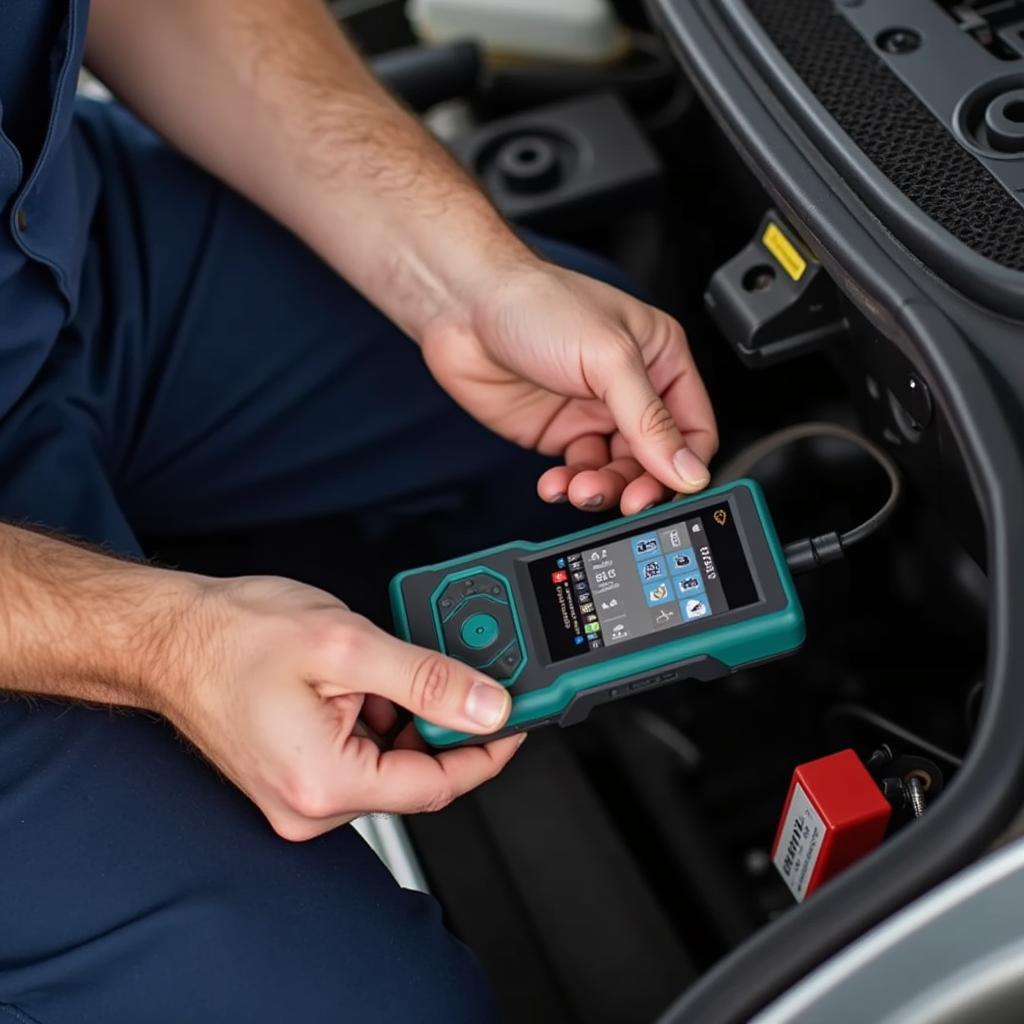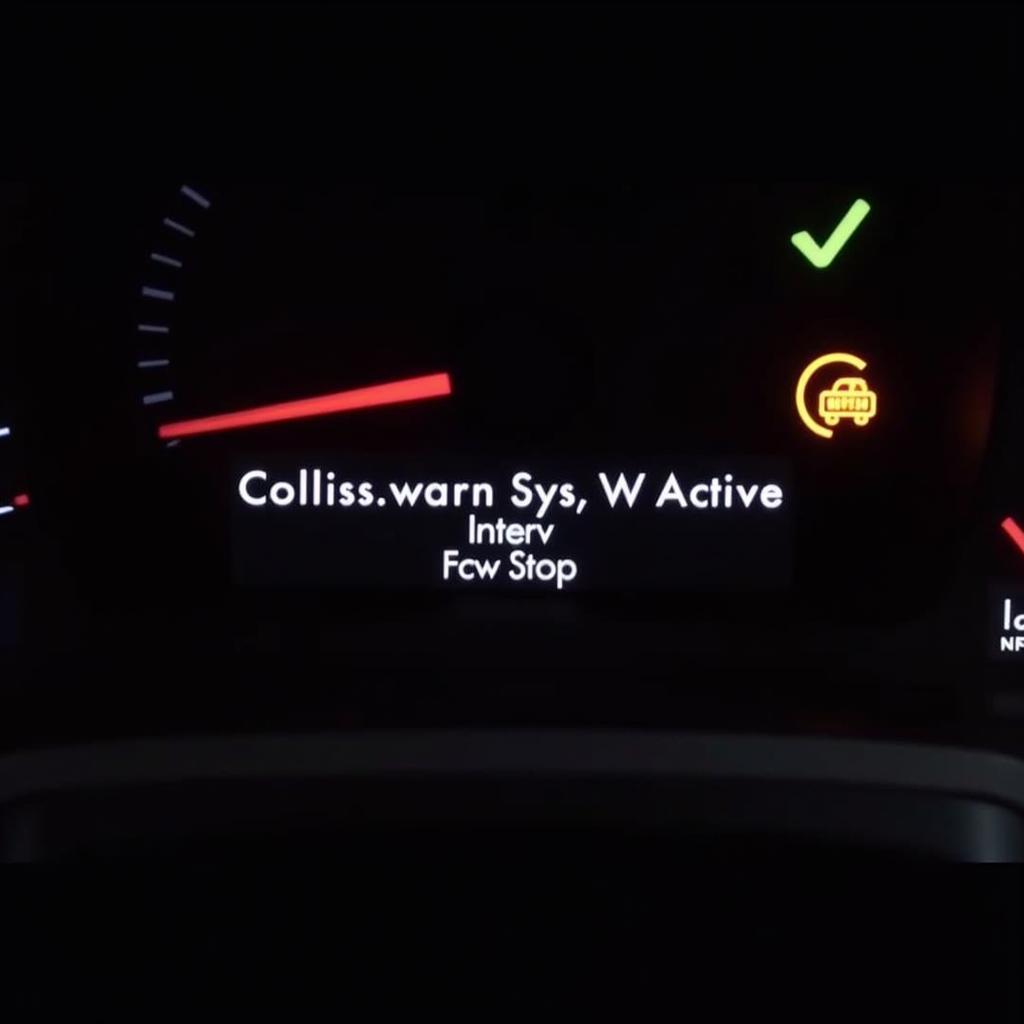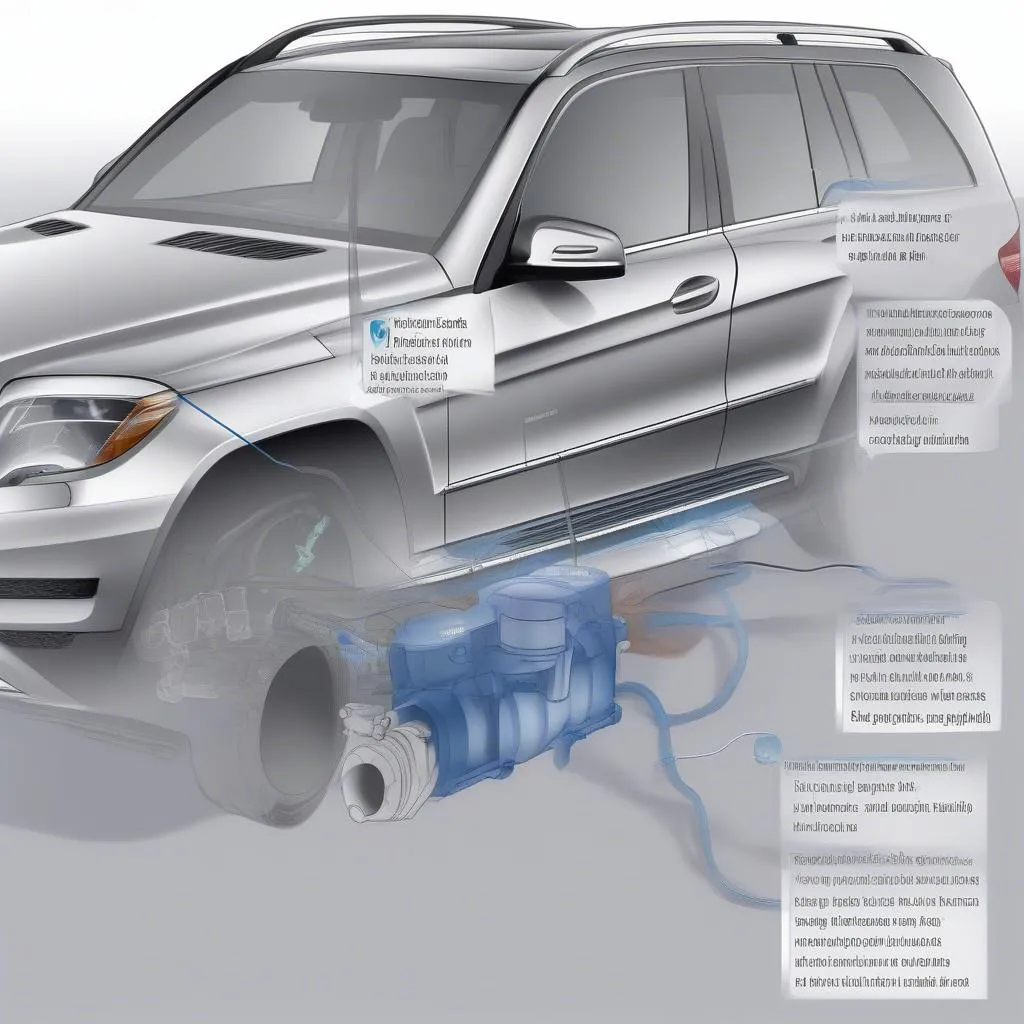The emergency brake warning system, a crucial safety feature in your vehicle, alerts you to potential issues with your braking system. But what could cause an emergency brake warning system to malfunction? A malfunctioning warning system can be frustrating and concerning, potentially indicating a serious problem or a simple glitch. This article explores the various reasons why your emergency brake warning light might be illuminating, from low brake fluid to faulty sensors and wiring issues. We’ll also discuss some troubleshooting tips and when it’s time to seek professional help. If you are experiencing this issue with specific car models, you might find our articles on the Audi A4 ABS and brake warning light or Nissan electronic parking brake warning light helpful.
Modern vehicles are equipped with sophisticated electronic systems, including the emergency brake warning system. This system is designed to alert the driver to a range of potential problems, from a simple engaged parking brake to more serious issues like low brake fluid or a failing brake system component. Understanding the potential causes of a malfunctioning emergency brake warning system is vital for maintaining vehicle safety and preventing costly repairs. One common reason for this issue might be something as simple as accidentally leaving the parking brake engaged.
Sometimes, the problem isn’t the parking brake itself but the sensor that detects its position. A faulty sensor can send incorrect signals to the car’s computer, triggering the warning light even when the parking brake is fully disengaged. This can be due to wear and tear, damage from road debris, or even corrosion. Similarly, a problem with the wiring harness connected to the parking brake system can cause communication errors, leading to an illuminated warning light. If you’re also experiencing issues with other warning lights, our article on what causes ABS, traction control, and brake warning lights to come on might provide some insight.
Low brake fluid is another common culprit behind a malfunctioning emergency brake warning system. The brake fluid reservoir typically has a sensor that monitors the fluid level. When the fluid drops below a certain threshold, the warning light is activated. Low brake fluid can indicate a leak in the brake lines, worn brake pads, or other issues requiring immediate attention. Ignoring this warning can lead to serious braking problems.
Diagnosing the Problem
Diagnosing the root cause of a malfunctioning emergency brake warning system can involve several steps. First, check if the parking brake is indeed fully disengaged. If it is, inspect the brake fluid level. If the fluid is low, top it off and check for leaks. If the fluid level remains low, you likely have a leak that needs professional attention. Next, check the parking brake sensor and wiring for damage or corrosion. If you own a Seat vehicle and are experiencing other warning lights, check our resource on Seat yellow warning lights.
Troubleshooting Tips
If you’re comfortable with basic car maintenance, you can try some simple troubleshooting steps. You can check the parking brake switch, the wiring harness, and the brake fluid level. However, if you’re unsure or the problem persists, it’s best to consult a qualified mechanic.
 Mechanic diagnosing a car's brake system with a diagnostic tool
Mechanic diagnosing a car's brake system with a diagnostic tool
When to Seek Professional Help
While some issues with the emergency brake warning system can be easily resolved, others require professional expertise. If you’ve checked the obvious culprits like the parking brake engagement, brake fluid level, and basic wiring, and the warning light persists, it’s time to take your vehicle to a qualified mechanic. They have the tools and knowledge to diagnose and repair more complex issues, such as a faulty ABS module or a problem with the electronic brake control unit. Don’t delay seeking professional help, as a malfunctioning brake system can compromise your safety. You might find our guide on the ABS brakes warning light helpful in understanding related issues.
“A common mistake people make is ignoring the warning light, hoping it will go away on its own,” says John Smith, a certified automotive technician with over 20 years of experience. “This can lead to more serious and costly repairs down the line.”
Remote Diagnostics and Programming
Advancements in technology now allow for remote diagnostics and programming of vehicle systems, including the emergency brake. This can be a convenient and cost-effective solution in some cases. A qualified technician can remotely access your vehicle’s computer system to diagnose the problem and even reprogram certain modules, potentially resolving the issue without a physical visit to the workshop.
 Technician performing remote diagnostics on a car's brake system
Technician performing remote diagnostics on a car's brake system
Conclusion
A malfunctioning emergency brake warning system can be caused by various factors, ranging from a simple engaged parking brake to more complex issues like faulty sensors, wiring problems, or low brake fluid. Understanding the potential causes and knowing when to seek professional help is crucial for ensuring your safety and preventing further damage to your vehicle. Don’t ignore the warning light; address it promptly to keep your brakes in optimal condition and avoid potential hazards on the road. Remember, a functioning emergency brake system is vital for your safety and the safety of others. Ignoring the warning light could have serious consequences.
FAQ
- What does the emergency brake warning light mean? The emergency brake warning light typically indicates that the parking brake is engaged, or there’s a problem with the braking system, such as low brake fluid.
- Can I drive with the emergency brake warning light on? While you might be able to drive short distances, it’s not recommended. The warning light signals a potential problem that could compromise your braking ability.
- How do I fix a malfunctioning emergency brake warning system? Start by checking if the parking brake is engaged. If not, check the brake fluid level. If the problem persists, consult a mechanic.
- Is it expensive to fix an emergency brake warning system malfunction? The cost depends on the underlying cause. A simple fix like topping off brake fluid might be inexpensive, while repairing a faulty ABS module can be more costly.
- Can remote diagnostics help with emergency brake issues? Yes, in some cases, remote diagnostics can be used to identify and even resolve problems with the emergency brake system.
- How often should I check my brake fluid level? It’s a good idea to check your brake fluid level at least once a month, or as recommended in your vehicle’s owner’s manual.
- What are the signs of a serious brake problem? Signs include a soft or spongy brake pedal, grinding noises when braking, pulling to one side when braking, and a vibrating brake pedal.


